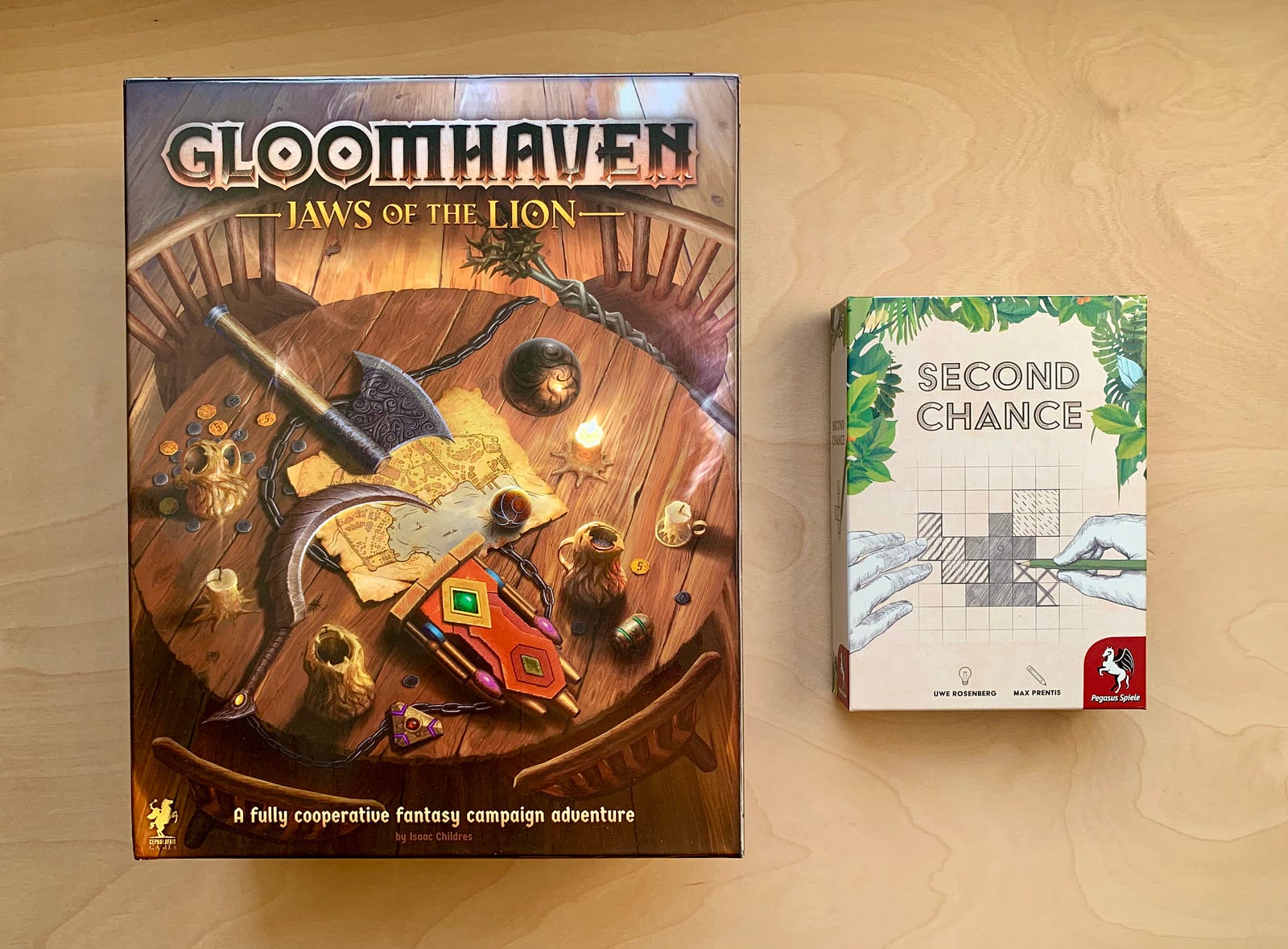Small VS Big Box Games — Which is better for building a compact board game collection?

As a constantly aspiring board game minimalist, I’ve had to experiment a lot with the right configuration of games to build and maintain my compact game collection (currently sitting at about 24 games). With so many games being included in oversized boxes, the appeal of small box games for someone like myself is very strong. Being able to fit 2 or 3 small box games in the physical space required by one game means I could fit even more games on my allotted single board game shelf, and clearly I’m not alone to share this view, especially if you consider the popularity of such games as the ‘Tiny Epic’ series of games or the plethora of card games that are often so well regarded by even the most seasoned board gamers.
Often smaller box games are simpler games that are also easier to learn and (gasp!) teach. Offering shorter playing times which is great for people like myself who don’t have the time to play longer games. A lot of small box games are also often designed with two players only in mind, another great option for people like me who happens to do most their gaming with their significant other (at least since a global health crisis basically vanished physical game meetups). It’s also fascinating and delightful to discover games that really push the game depth-to-box-size ratio to the max. Offering near full-fledged gaming experiences in a minuscule footprint. Even mass market hits like Pandemic have sought to tap into this market appetite with their most recent mini-me edition, Pandemic: Hot Zone — North America. In fact hearing that a well loved board game is being re-incarnated in a ‘card game’ or *sigh* ‘dice game’ format can send gamers squealing with delight.
Beyond this we can look towards the somewhat recent craze of ‘roll n’ write’ games — board games that are boiled down to their essential oils, replacing scoresheets and dice for complex and intersecting game mechanisms. If we look beyond North America and Europe, we can gaze with admiration at the games being published in Japan and Asia more broadly. With entire game-lines building their brand around eye-wateringly tiny boxes. Even ‘larger’ box games from Japan and Asia seem to be dramatically less bloated than their Western counterparts (perhaps not surprising considering global health stats for obesity!).
So surely with all this choice, and sheer creativity you’d expect me to be singing the praises of small box games without a shred of doubt in my voice. Especially for a board game minimalist, who’s constantly whining about having a single shelf to store their board games. Right?
Well…not quite. Now don’t get me wrong, I am persistently frustrated by board game boxes where the air takes up more room than the game components, but small box board games aren’t perfect. Firstly although I can admire the herculean efforts of those designers that have crammed a ton of game into a smaller box, you’re still much more likely to find a more deep and mentally stimulating game in a bigger form factor. But the challenge then comes in learning the games. Consider to games, one small box and one ‘normal’ sized. Learning the smaller game might take up to 75% of the time/effort of learning the bigger game, but only provide 50% of the gaming satisfaction. Meaning that investing that additional time to learn a bigger game is potentially more rewarding over the longer run.
Secondly you have the consideration of components and supporting materials. Bigger games can often offer larger components, which are easier to handle and manipulate (especially for people like myself who are tall and large handed). In addition, bigger games can typically afford to provide you with a game board, and often, even individual game boards. All of which help you manage the flow of the game and keep things more cleanly organised. This lack of supporting components was highly apparent to me recently when seeing a ‘card game’ version of a notoriously complex board game being released. As complex as the board game is, at least it had multiple boards that offered graphical guidelines for placement and information tracking. Something the card game tried to cram into a much small footprint, leaving me with the impression of a much more mystifying gaming experience.
Finally, the actual size of these tiny games could be their most dangerous feature. Being able to fit 2, 3 or 4 games in the space of a bigger game (possibly even for the same cost) means it makes it easier for your collection to expand in size. I’ve really noticed this in the past year or so myself, finding it so easy to pick up a more affordable small box game I know I can slot into my shelf space as opposed to a costlier big game I know I need to dedicate the space for. But if I can’t be bothered to play these smaller games or the gaming experience leaves me wanting more, then why not go for the bigger option?!
I’m not saying I won’t ever buy a small box game again, but I wanted to share my own journey reaching a different and perhaps unconventional view of smaller box games. I do think that as I work towards maintaining my compact collection size in the future, I will pay less attention to box size and focus more on the satisfaction of the gameplay and potential longevity of the game even if it is a bit on the heftier side!
If you enjoyed this post and what you share your thoughts with me directly, feel free to hit me up over on twitter @Gameminimalist. Thanks!

Comments
Post a Comment